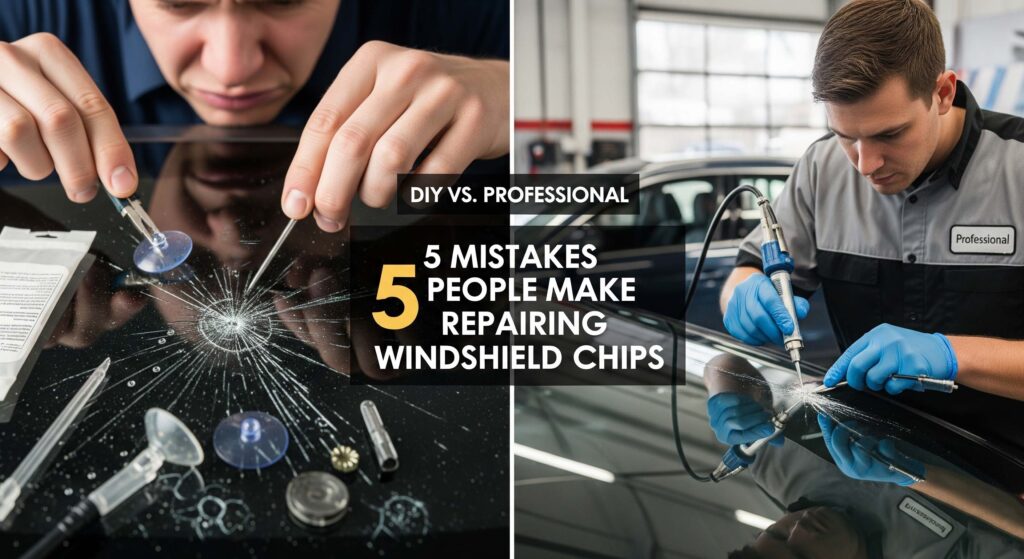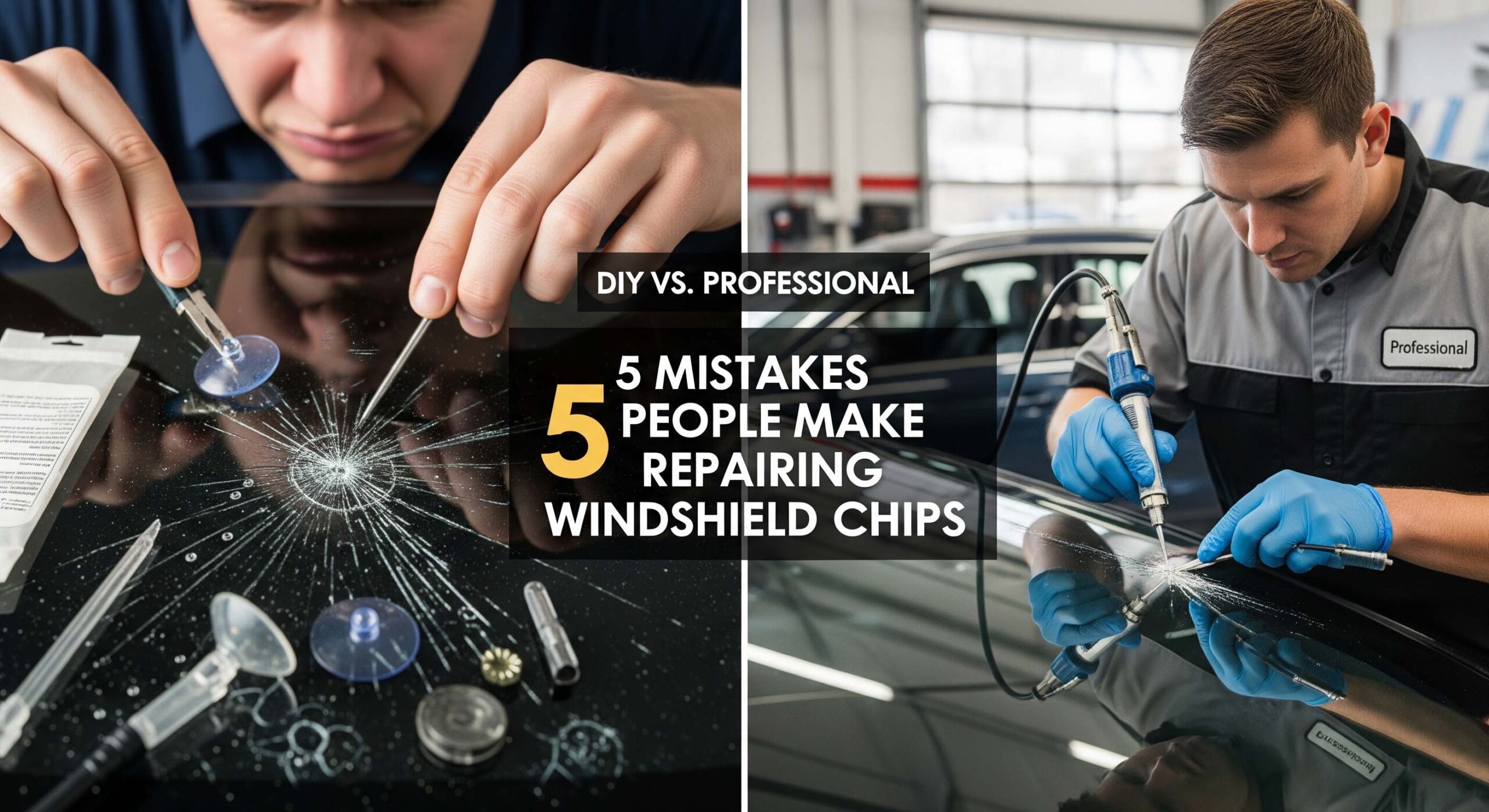When a rock chips your windshield, your first thought might be: Can I fix this myself? DIY windshield repair kits are widely available online and at auto parts stores, and they promise a quick, low-cost solution. While these kits can sometimes provide a temporary fix, many drivers underestimate the risks of attempting repairs without the right tools, training, or materials.
In reality, a poorly repaired chip can quickly spread into a full-blown crack, turning what could have been a simple repair into a costly windshield replacement. Below, we break down five of the most common mistakes people make when trying to repair windshield chips themselves, and why turning to a professional is often the safer, smarter option.
1. Misjudging the Size and Severity of the Chip
Not all chips are created equal. Some tiny chips can be filled effectively, but larger or deeper damage often requires a professional touch—or even a full replacement. DIY kits don’t provide guidance for assessing damage severity, and many drivers attempt repairs on chips that are already too large or in unsafe areas (like directly in the driver’s line of sight).
Why professionals help: Trained technicians can evaluate whether a repair will hold or if replacement is the only safe option. This prevents wasted time and money on ineffective DIY fixes.
2. Using Low-Quality Resins and Tools
Most DIY kits use inexpensive resins that may not bond properly with your glass. Over time, exposure to sunlight and temperature changes can cause these fillers to discolor, bubble, or fail. Plus, applying resin requires precision—if air bubbles remain trapped inside, the chip’s structural integrity is compromised.
Why professionals help: Auto glass shops use industrial-grade resins and specialized equipment that create a nearly invisible, long-lasting bond.
3. Skipping Proper Cleaning and Preparation
Successful windshield repair requires a perfectly clean and dry surface. DIYers often overlook tiny particles of dirt, moisture, or even leftover glass dust inside the chip. This contamination prevents resin from adhering correctly and leaves weak spots that can spread into cracks.
Why professionals help: Technicians carefully clean, vacuum, and prep the damaged area to ensure the strongest possible repair.
4. Causing More Damage During the Repair
Applying too much pressure with a DIY injector, drilling at the wrong angle, or mishandling tools can make a chip worse. Instead of fixing the problem, the glass can splinter and create additional cracks.
Why professionals help: Experienced repair specialists know the exact techniques required to stabilize a chip without making it worse.
5. Ignoring the Importance of Calibration and Safety
Modern vehicles often come equipped with advanced driver assistance systems (ADAS), such as lane-keeping cameras and collision sensors, mounted directly on or near the windshield. Attempting a DIY repair or replacement without considering ADAS calibration can compromise these critical safety systems.
Why professionals help: Certified shops can recalibrate your vehicle’s sensors after repair or replacement, ensuring your ADAS functions safely and accurately.
The Safer Choice: Professional Windshield Repair and Replacement
While DIY kits may seem like a quick and cheap fix, the risks often outweigh the rewards. A botched repair can reduce visibility, weaken your windshield, or even endanger your safety in a collision.
By choosing a professional service through Glass.net, you get:
- Expert evaluation of chip size and severity
- Strong, long-lasting repairs or replacement with professional-grade materials
- Proper ADAS calibration for newer vehicles
- Peace of mind knowing your windshield is safe and secure
Use our Free Quote to compare up to three shops in your area for windshield replacement
Final Word
Your windshield is more than just glass, it’s a vital part of your vehicle’s safety system. If you spot a chip, resist the temptation to handle it on your own. Instead, connect with a trusted local shop through Glass.net and get the job done right the first time.

To read more, visit blog.glass.net

